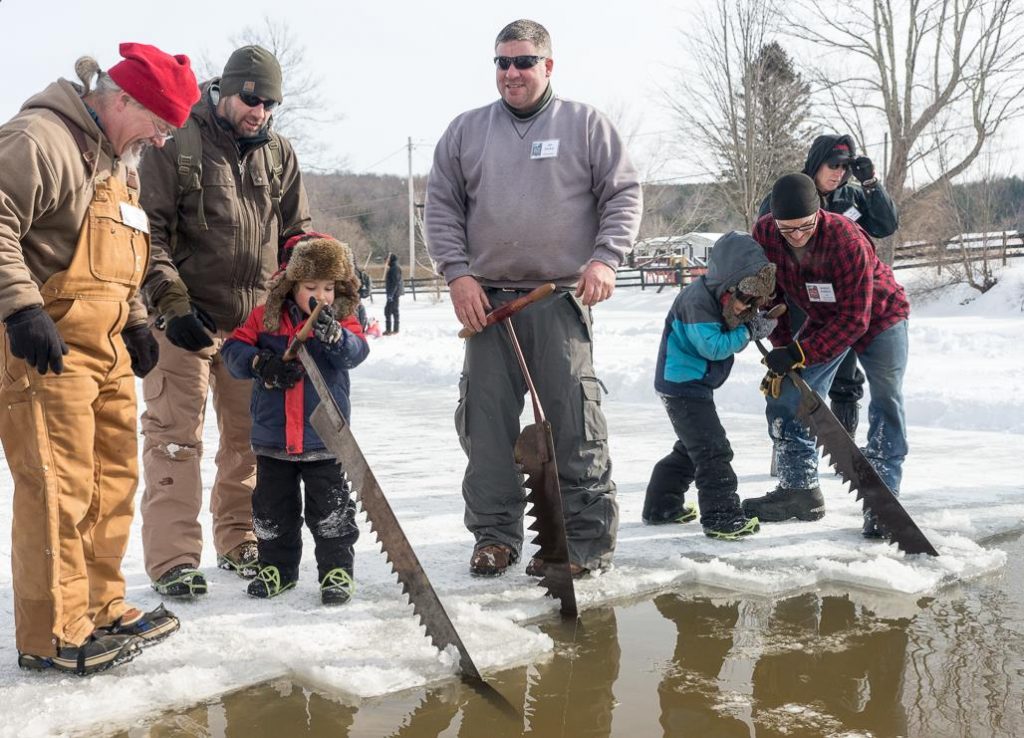
Welcome! Since the Ice Harvest Festival has gone virtual this year, this guide includes activities that you can do as a family/group at home. Some of the activities will give you a chance to talk to and work with a partner or your whole family/group. Some of these activities also involve going outside, so be sure to bring someone with you and ask someone for help with anything you’re unsure about or need help with. Read through this page, and when you’re ready to start, you can print this worksheet.
- Find evidence of animal life. Can you see or hear an animal? Can you find tracks or other evidence that an animal has walked past?
2. What plant life can you find? You can find plants that are still growing (tree, bush, grass) and items that are not, like leaves, acorns, and sticks. Can you find at least three different plants?
3. Make your own tracks in the snow! Leave handprints or footprints in the snow, or use a stick or your fingers to draw out animal tracks. What other ways can you make markings or art in the snow?
4. Locate your favorite item you use outdoors. This could be clothing, such as a winter hat or mittens, or a sled for riding down snowy hills.
5. Search for these four different things that happen because of cold weather:
- Cold Noses
- Your own breath
- Snowflakes
- What else can you find that is affected by the cold?
6. Find water in one of its three forms: liquid (water), solid (ice), or gas (water vapor in the air). As a challenge, find all three!
7. Find 10 colors! Look around and find at least 10 different colors around you.
8. Ask your partner what item reminds them of when they were younger. Can they find something in the house or a picture that reminds them of that item?

9. Find an item that reminds you of your partner: something they wear, something they make, or anything that makes you think of them!
10. Make your own tracks on paper! You can use colored pencils, markers, paint, or cut out shapes with scissors. Try making at least three different kinds of tracks.
You can learn about animal tracks in winter from this guide from the New York Department of Environmental Conservation.
11. What tools do you use at home? At Hanford Mills Museum we use a variety of different tools to harvest and transport ice. The photos below show some of these tools. We also use tools like measuring tapes and hammers.
Think about the different tools that are around your home. What do you use them for? Find three different tools with your partner, and talk about what the tools are and how they are used.
Tools We Use at the Ice Harvest:

Ice saws 
Grappling hook 
Ice tongs and ice saw 
Ice tongs 
Pike hooks
Have fun discovering these items and talking about them! We hope to see you next year at the Ice Harvest Festival!
More things to try!
- Find out how to make a model ice house, with templates and instructions.
- You can make your own small batch of ice cream using this recipe. We make much larger batches of ice cream on July 4 at our Independence Day Celebration. The ice we harvest from the Mill pond chills the cream to make it into ice cream.
- Do you know that salt interacts with water in some interesting ways? You can learn more about salt and water with this experiment.
- This winter we have plenty of snow on the ground in East Meredith. You can also design and make your own snowflakes to decorate inside. Here is one way to make them.





